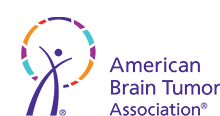by Katie Kaiser Smith
In 2012, my life was filled with the joys and challenges of raising a one-year-old baby girl and a six-year-old son. But that year also marked the beginning of a journey I never expected to take—a battle with brain cancer.
Early Signs and Diagnosis
It all started with some subtle symptoms. I began to feel tingling in my left fingertips, and my left arm felt heavy and tired, especially when I was blow-drying my hair. At first, I didn’t pay much attention to it, but when I noticed a slowness in my fingers, I became worried. Despite not having any of the typical brain tumor symptoms, I feared I might have ALS, which was terrifying.
An MRI soon revealed a 4 cm mass in my brain. That’s when the whirlwind of meetings with surgeons began. My first craniotomy, unfortunately, was unsuccessful in removing the tumor. The doctors told us it was inoperable. We were devastated. However, they were able to perform a biopsy, and the results confirmed our worst fears—it was cancer.
The Battle Begins: Chemo and Radiation
I immediately began treatment with Temodar, a chemotherapy drug, and underwent six weeks of radiation. But after just four weeks, I developed an allergy to Temodar and had to stop. The radiation caused significant swelling, leading to seizures and the loss of use in my left hand. Walking became increasingly difficult.
To manage the swelling, my doctor prescribed Avastin, and we decided to try a different chemotherapy drug called CCNU. I managed two rounds of CCNU, but my blood cell counts dropped too low, and we had to stop treatment. My neuro-oncologist feared for my life and recommended I seek treatment at UCLA, where he believed they might be able to remove my tumor.
A Second Chance: Surgery at UCLA
At UCLA, I met with Dr. Linda Liau, who felt confident she could perform a full resection of the tumor. In August 2013, I underwent my second brain surgery, which successfully removed the tumor. The pathologist later confirmed that it was glioblastoma multiforme, a grade 4 brain cancer.
The surgery came with its own set of challenges. I woke up unable to walk, use my arm, swallow, or speak very well. I immediately began an intensive rehabilitation program, both inpatient and outpatient. Slowly but surely, I regained the ability to walk, although my left leg still drags, and I fall often. I can barely use my left hand, and I have a slight palsy on my face. Despite these challenges, I’ve mostly recovered and have adapted to my new normal.
Life After Cancer: Living with Epilepsy and Uncertainty
The radiation left me with epilepsy, a condition I manage with medication. I now go for an MRI every nine months, and I’m grateful to say that I haven’t had any recurrence. However, my life is forever changed. The carefree days are behind me, replaced by a constant awareness of the possibility of recurrence.
Despite the uncertainty, I strive not to live in fear. Instead, I focus on helping others who are newly diagnosed. I understand how truly terrifying it is, and I want to offer any information and emotional support I can.
A Message of Hope: 12 Years Cancer-Free
Today, I’m proud to say that I have been cancer-free for 12 years. I realize how incredibly fortunate I am to have survived this horrible disease. My experience inspired me to write a book called Welcome to Katie’s Brain, which chronicles my daily journal from the first four years of my journey. It’s the book I wish I had when I was diagnosed because there are so few survivors to tell their stories.
If you or someone you know is facing a brain tumor diagnosis, I want you to know that there is hope. The road may be difficult, but you are stronger than you think. Surround yourself with support, seek out the best care, and never give up hope.
Thank you for taking the time to read my story. I hope it can offer some comfort and encouragement to those who need it most.
This blog post is not only a personal account of surviving glioblastoma but also a message of hope and resilience. If you found this story helpful, please share it with others who might benefit from it. Remember, you are not alone in this fight.



